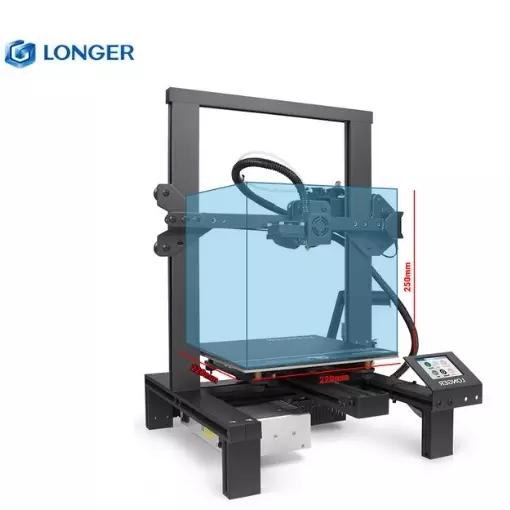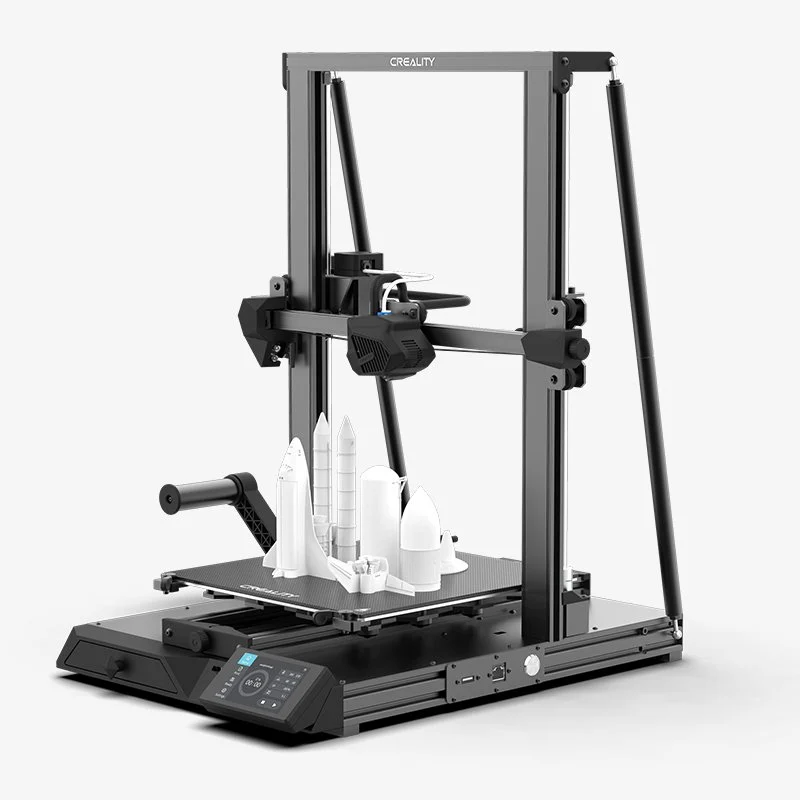Compare LK4 X vs CR 10 Smart
Comparison between the best 3D printers
Choose the best 3D printer at the best price. The cheapest 3D printers are here.
Buy a 3D printer here with 3D Fila.
 |
 |
|
| Model | LK4 X |
CR 10 Smart[BUY CR 10 Smart] |
| Printing Material | Filament | Filament |
| Buy Filament for Longer 3D LK4 X | Buy Filament forCreality 3D CR 10 Smart | |
| Estimated price | $299,00 | $520,00 |
| Manufacturer | Longer 3D | Creality 3D |
| Release Year | 2022 | 2021 |
| Print Volume [mm] | 220x220x250 | 300x300x400 |
| Printer Size [mm] | 465x485x615 | 578x522x648 |
| Weight [kg] | 9,8 | 14 |
| Power Loss Recovery | YES | YES |
| Enclosed printer | NO | NO |
| Bed Leveling | Automatic | Automatic |
| Filament End Sensor | YES | YES |
| Bed type | Heated | Heated |
| Power supply system | Bowden | Bowden |
| Standard nozzle | 0,4 | 0,4 |
| Maximum Nozzle Temperature [°C] | 250 | 260 |
| Maximum Bed Temperature [°C] | 100 | 100 |
| Maximum printing speed [mm/s] | 120 | 200 |
| Filament holder | YES | YES |
| Camera for supervision | NO | NO |
| Recommended filaments | PLA, TPU, ABS, PETG | PLA, PETG, Tritan, Flex, ABS |
| Recommended slicers | Cura, Simplify, Slic3r | Cura, Simplify, Slic3r, IdeaMaker |
| Maximum Resolution [mm] | 0,1 | 0,1 |
| Processor | 8 bits | Processador ARM STM32F103 RET6 CPU |
| Display | Touchscreen TFT 4,3'' | Display touchscreen 4,3'' |
| Power Supply | 12V / 320W | 110/220V / 350W |
| Connectivity | SD / USB | SD / USB / Wi-Fi |
| Operating systems | Windows, Mac, Linux | Windows, Mac, Linux |
| Date of registration in the system | 2021-04-15 | 2022-11-04 |
| Release date | 2022 | 2021 |
| Extra features | Longer LK4 X offers intelligent 16-point auto-leveling and dual direct-gear extruders for precise filament control, compatible with multiple materials. It features an ultra-quiet 32-bit motherboard and open-source firmware, promoting creative freedom. Its PEI film platform ensures strong adhesion and easy model removal. Includes resume printing functions and filament out-of-stock protection. Assembly is simple, with 95% pre-assembled. It has a 4.3-inch touch screen, dual fan kit, low power consumption, manual belt tensioners and improved Teflon tube. | The Creality CR-10 Smart stands out for its stability, with a dual Z axis and additional supports, minimizing oscillation in high prints. Its redesigned hotend offers better cooling, expanding the range of usable materials. The glass printing surface, with automatic leveling, facilitates the adhesion and removal of parts. Includes Wi-Fi / LAN connection and automatic shutdown after printing, adding convenience and efficiency. It features an effective single-gear extruder and an intuitive touchscreen interface, despite some firmware issues. |
| Support for multiple colors and materials (AMS and CFS) | NO | NO |
Notes * |
||
| Cost-benefit | 7 / 10 | 6 / 10 |
| Hardware | 2.8 / 10 | 2.4 / 10 |
| Tela | . | . |
| Print volume | 3 / 10 | 4 / 10 |
| Performance | 1 / 10 | 2 / 10 |
| [BUY CR 10 Smart] |
Conclusion |
| In concluding the comparison between the Longer 3D LK4 X and the Creality 3D CR 10 Smart, several key factors emerge that could guide your purchasing decision. The LK4 X, being the more affordable option, offers impressive features for its price, such as intelligent auto-leveling and a well-regarded dual gear extruder. Its compact design, lower weight, and good user-friendly features like a touchscreen enhance the overall user experience, particularly for those new to 3D printing. On the other hand, the CR 10 Smart, with a larger print volume and superior stability features, caters to users seeking to print larger projects or more intricate designs. Its robust build quality, improved cooling systems, and connectivity options, including Wi-Fi, make it a compelling choice for those looking to produce high-quality prints with various materials. While the LK4 X stands out for its cost-effectiveness and versatility, the CR 10 Smart’s higher performance capabilities and larger build size justify its higher price for dedicated users or professionals. Ultimately, the decision hinges on your specific 3D printing needs—whether you prioritize budget and features or require the increased capacity and robustness of a higher-end model. |

